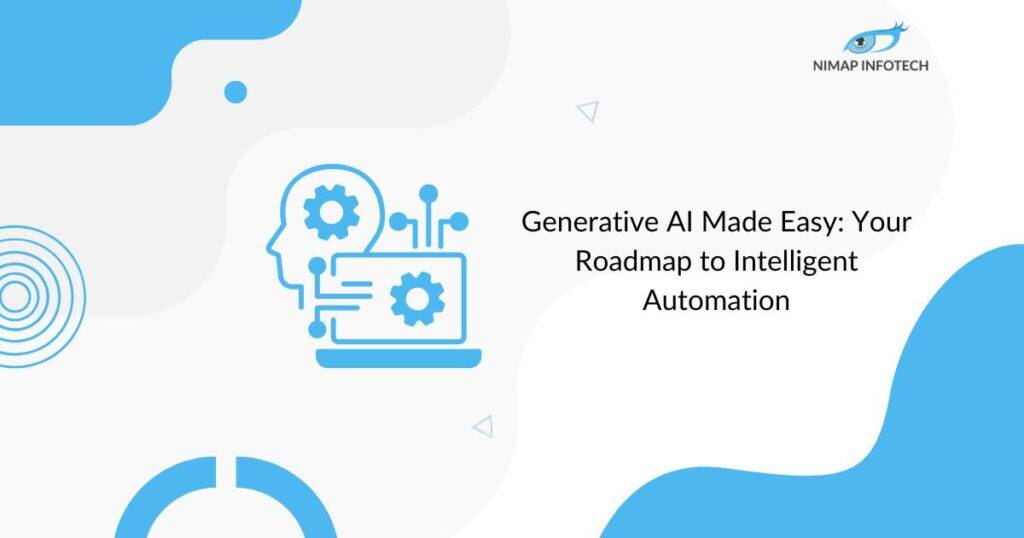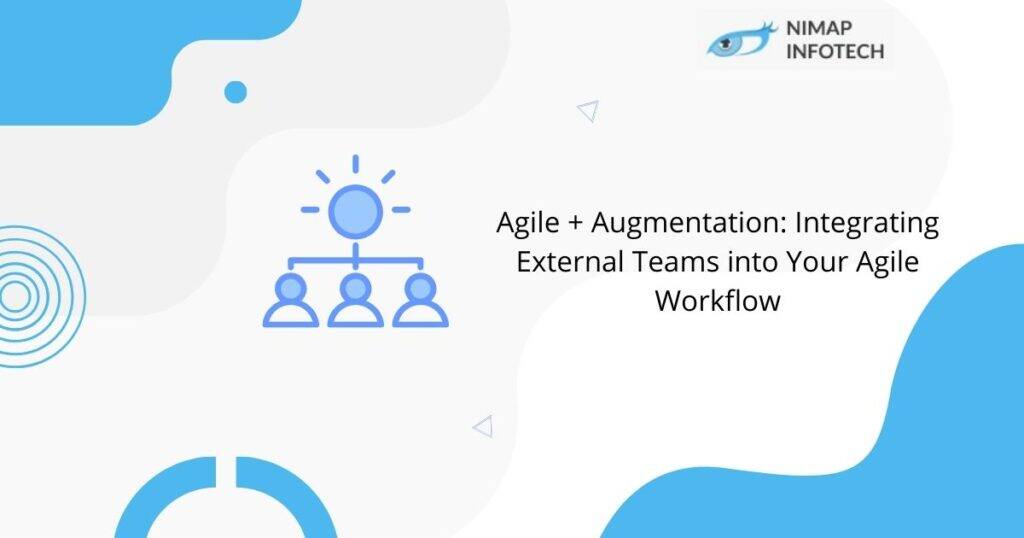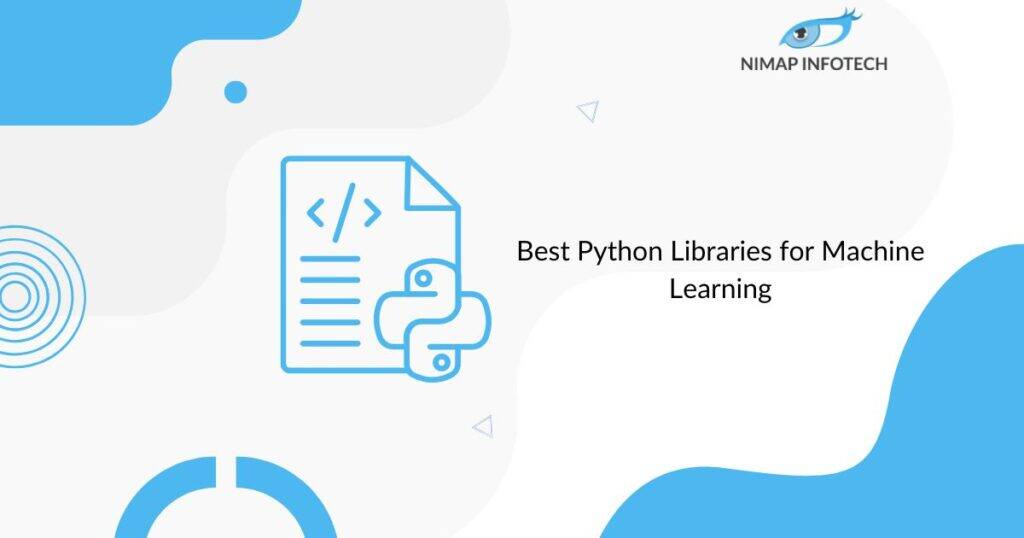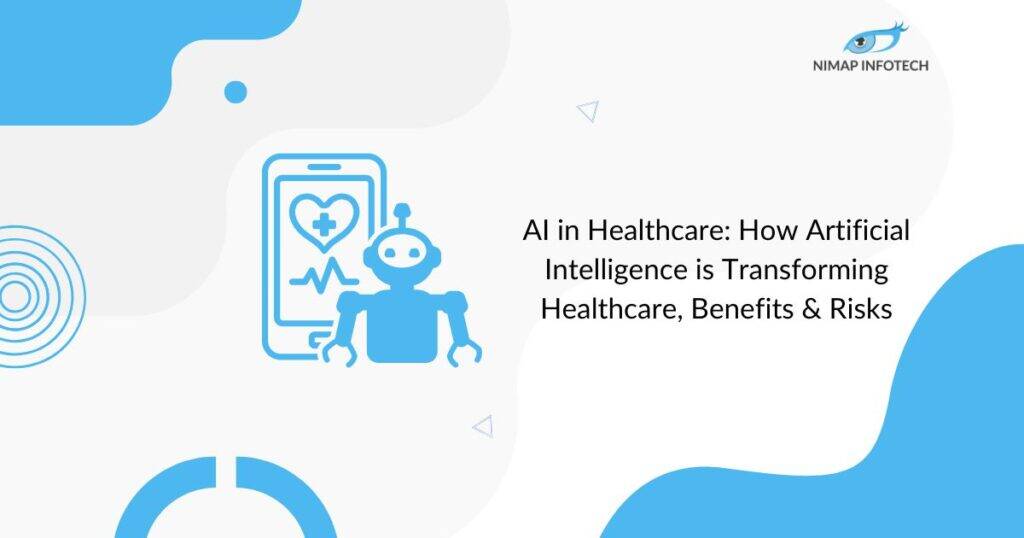Generative AI is transforming industries by bringing next-generation machine learning capabilities to the forefront. Since the rise of ChatGPT, businesses, and startups worldwide are exploring how to build AI applications of similar caliber. One of the most significant trends is the adoption of Generative AI at work, with 37% of professionals in the marketing and advertising sector in the US already leveraging its potential.
If you’re looking to integrate Generative AI development into your digital products, understanding its potential and implementation strategies is crucial. With our expertise in Generative AI consulting, we help businesses harness AI-powered solutions for automation, content generation, intelligent chatbots, and decision-making tools.
What is Generative AI?
Generative AI is a revolutionary branch of machine learning that enables computers to automatically create new and unique content—including text, images, videos, and audio—after being trained on relevant datasets. By analyzing vast amounts of data, Generative AI solutions identify patterns, retain key insights, and generate original outputs that mimic human creativity.
At first glance, Generative AI development may seem straightforward, but its evolution has spanned decades. The foundation of Generative AI development services dates back to the 1950s, when early researchers experimented with neural networks and rule-based models to simulate human decision-making. Over time, advances in deep learning and neural networks paved the way for today’s advanced Generative AI solutions.
Key Technologies Behind Generative AI Development
Diffusion Networks –
- Train on image samples by gradually adding noise and then reversing the process to generate realistic, high-quality outputs.
Generative Adversarial Networks (GANs) –
- A deep learning model where a generator creates new content while a discriminator evaluates its authenticity, refining the model iteratively.
Transformers –
- A neural network that enables large language models (LLMs) to process large datasets efficiently.
- The attention mechanism allows the model to determine the significance of words in a sentence, improving output accuracy.
Variational Autoencoders (VAEs) –
- Store probabilistic representations of training data and use them as references to create new, unique outputs.
How to Build a Generative AI Solution: A Step-by-step Guide
Developing a Generative AI solution is a structured and iterative process that requires careful planning, data management, model selection, and continuous improvements. Each phase plays a crucial role in building a high-performing Generative AI system that aligns with your business objectives. Below is a comprehensive guide to help you transform your Generative AI development idea into a tangible solution.
1. Define the Problem and Objectives
The foundation of any Generative AI development project begins with clearly defining the problem you want to solve. Your problem statement should outline the specific use case for Generative AI solutions, such as:
- Image synthesis for creating realistic visuals
- Style transfer to apply artistic filters to images
- Text generation for automated content creation
- Data augmentation for training AI models
A well-defined problem statement will guide the entire development process and ensure your Generative AI solution meets business needs.
2. Prototype the Generative AI Model
Building a prototype allows stakeholders to visualize the AI model’s potential, identify potential challenges, and iterate on the design before full-scale development. Prototyping helps to:
- Test the core functionalities of your AI model
- Evaluate feasibility and scalability
- Identify and mitigate potential risks early on
A well-structured prototype ensures a smoother transition to full development and enhances decision-making at every stage.
3. Data Collection and Preparation
High-quality data is the backbone of Generative AI development services. This step involves:
- Sourcing and collecting relevant datasets (text, images, or other formats)
- Cleaning and structuring data to eliminate noise, errors, and inconsistencies
- Standardizing and normalizing data for better model generalization.
Proper data preparation is essential for ensuring that your AI model can deliver accurate and high-quality outputs across various inputs.
Choose the Right Generative AI Algorithm
Selecting the most suitable Generative AI model determines the accuracy, efficiency, and success of your AI solution. Popular models include:
Generative Adversarial Networks (GANs)
- Best for image synthesis, deepfake creation, and style transfer
Variational Autoencoders (VAEs)
- Ideal for data compression, anomaly detection, and content generation
Transformers
- Used for text generation, chatbots, and large-scale language models (LLMs) like ChatGPT
Diffusion Models
- Effective for high-quality image generation
4. Train and Evaluate Your Generative AI Model
Once the Generative AI algorithm is selected, the training process begins. This involves:
- Feeding annotated data into the model
- Running iterative training cycles to improve performance
- Fine-tuning model parameters for optimal accuracy
Although Generative AI models use self-supervised or semi-supervised learning, human intervention is crucial for:
- Fine-tuning the model to ensure accurate and high-quality outputs
- Monitoring performance metrics and adjusting algorithms accordingly
- Enhancing precision and reducing biases. Continuous training and evaluation ensure that the model aligns with business goals and delivers the expected results.
5. Begin Generative AI Development
After training, the next step is full-scale Generative AI development, which includes:
- Building APIs and user interfaces for seamless integration with existing systems
- Setting up the development environment (hardware, software, libraries, and tools)
- Coding the AI model using frameworks like TensorFlow, PyTorch, or OpenAI APIs
Testing and Validation
Rigorous testing is essential to verify the reliability, performance, and security of the Generative AI solution. Key testing phases include:
- Performance testing – Ensures model efficiency under various conditions
- Functional testing – Verifies that features work as expected
- A/B testing – Compares different AI models to optimize performance
- User acceptance testing (UAT) – Confirms that the AI system meets business objectives
By thoroughly testing and validating the solution, developers can mitigate potential risks and improve AI performance before deployment.
6. Deploy the Generative AI Solution
Deployment involves transitioning the AI model from the development environment to real-world applications. This stage includes:
- Selecting the right infrastructure to support computational requirements
- Ensuring scalability to handle increasing workloads
- Integrating AI with existing enterprise systems (cloud platforms, databases, APIs)
- Implementing security measures and compliance with data protection laws
Post-deployment, the AI system must be continuously monitored to detect issues, optimize performance, and refine its outputs.
Ongoing Maintenance and Continuous Improvement
Generative AI solutions require regular updates and optimizations to stay relevant and efficient. Maintenance includes:
- Routine performance checks to identify areas of improvement
- Algorithm refinements to enhance content generation accuracy
- User feedback analysis for better AI-driven experiences
- Security updates to safeguard against vulnerabilities
By continuously refining and improving the AI system, businesses can stay ahead of market trends and maximize their Generative AI investment.
Generative AI Applications
Generative AI is revolutionizing the next generation of applications, transforming programming, content creation, visual arts, and other creative and engineering disciplines. Below are key areas where generative AI is making an impact:
Graphics
Generative AI enhances artistic expression by transforming simple images into intricate, visually stunning artworks. Whether starting from a rough sketch or a hand-drawn face, AI-powered graphics tools can generate photorealistic outputs. These algorithms can also render images in the style of specific human artists, enabling unique, personalized creations. Beyond replication, AI introduces new patterns, figures, and details, elevating artistic imagination to unprecedented levels.
Photography
Generative AI improves the realism of photos while enabling creative manipulation. Key features include:
- Advanced manipulation: Adjusts color, lighting, form, and style while preserving essential details.
- Realistic enhancements: AI detects and corrects missing or misleading visual elements.
- Text-to-image conversion: Converts text prompts into detailed images
- High-resolution upgrades: Enhances low-resolution images to high-quality visuals.
- Synthetic images: Creates lifelike human portraits using generative techniques.
- Semantic image translation: Produces realistic versions of sketches or label maps.
- Image completion: Seamlessly fills in missing areas, repairs old photographs, and enhances backgrounds.
Audio
Generative AI transforms audio production by making digital voices more natural and expressive. It supports applications such as:
- Text-to-speech: Converts text into realistic, human-like speech.
- Voice enhancement: Refines and improves computer-generated voices.
- Music generation: Creates compositions infused with human-like emotion and complexity, helping musicians and content creators produce original soundtracks effortlessly.
Video
Generative AI empowers filmmakers and content creators with advanced tools for video production and editing:
- Automated editing: AI streamlines tasks like cutting, merging, and sequencing footage.
- Special effects and animations: Enhances visual storytelling with dynamic effects.
- High-quality video generation: Produces videos in specific themes and styles.
- Resolution enhancement: Upgrades visual details and refines footage.
- Video style transfer: Applies the style of a reference image or clip to a new video.
- Predictive video generation: Anticipates and generates future frames to extend sequences.
Text Generation and Processing
Generative AI revolutionizes content creation, providing new ways to generate, summarize, and translate text:
- Automated content creation: AI assists in writing blogs, marketing posts, and social media updates.
- Language translation: AI-powered models enable seamless multilingual communication.
- Chatbots and virtual assistants: AI enhances interactions by generating real-time, context-aware responses.
- Summarization: Automatically extracts key insights from lengthy documents.
- Report generation: AI simplifies data interpretation by producing insightful reports.
Code Generation and Development
AI-driven development tools optimize programming workflows by assisting with code creation, testing, and debugging:
- AI-powered code generation: Produces functional code snippets from natural language prompts.
- Code completion: Predicts and suggests lines of code to improve efficiency.
- Natural language interfaces for coding: Allows developers to interact with AI using everyday language.
- Automated testing: AI generates test cases and analyzes execution paths for enhanced software reliability.
Synthetic Data Generation
Generative AI is invaluable for creating artificial datasets that replicate real-world data characteristics while preserving privacy:
- Model training: Provides realistic training data when real-world datasets are unavailable or restricted.
- Privacy protection: Enables organizations to test applications without exposing sensitive information.
- Software testing: Simulates diverse scenarios to validate software functionality.
Enterprise Search and Knowledge Management
Businesses benefit from generative AI-powered search systems that enhance efficiency and accuracy:
- Trend analysis: Identifies emerging patterns from large document repositories.
- Document summarization: AI highlights key insights within lengthy reports.
- Context-aware search: Delivers results based on conceptual understanding rather than keyword matching.
Chatbot Performance Optimization
AI-driven chatbots deliver more engaging and accurate interactions:
- Enhanced language understanding: AI refines chatbot responses to be more natural and contextually relevant.
- Open-ended question handling: Allows chatbots to address a wide range of queries.
- User profiling: AI personalizes chatbot interactions based on past engagements.
Generative AI is reshaping industries by streamlining processes, enhancing creativity, and automating complex tasks. The applications outlined above represent just a glimpse of its transformative potential, with ongoing advancements expanding the possibilities further.
Best Practices for Building Generative AI Solutions
Building effective generative AI solutions requires following best practices to ensure high performance, security, and usability. By implementing these strategies, you can develop AI models that deliver accurate, reliable, and impactful results.
1. Gather High-quality Data
The success of generative AI models depends on the quality of the data used for training. To achieve optimal results:
- Ensure data is clean, structured, and free from errors or inconsistencies.
- Avoid biases in the dataset to prevent skewed or unfair outputs.
- Use diverse and representative data sources to improve model generalization.
2. Choose the Right Algorithm
Selecting the appropriate AI model is crucial for achieving the desired outcomes. Consider the following:
- For natural language processing (NLP), models like GPT-4o offer excellent text-generation capabilities.
- For image generation, deep learning models such as Generative Adversarial Networks (GANs) and Stable Diffusion are effective.
- Align the model selection with the specific application, whether it’s text, images, video, or audio.
3. Ensure Security and Privacy
Protecting sensitive information and ensuring compliance with data privacy regulations is critical. Implement security measures such as:
- Regular updates and security patches to mitigate vulnerabilities.
- Strong encryption methods to safeguard data.
- Access control mechanisms to restrict unauthorized usage.
4. Train and Fine-tune Models Effectively
To maximize the performance of generative AI models:
- Adjust parameters such as learning rate, batch size, and epochs to optimize accuracy.
- Regularize models to prevent overfitting and improve generalization.
- Continuously refine models based on real-world feedback and performance evaluations.
5. Stay Updated with Technological Advancements
Generative AI is evolving rapidly, and staying ahead requires continuous learning and adaptation. Best practices include:
- Incorporating advancements such as multimodal AI and reinforcement learning for enhanced capabilities.
- Keeping up with the latest developments in AI models, tools, and frameworks.
- Exploring new architectures and training methodologies to improve efficiency.
Case Study: Transforming AI Video Creation
One notable example of AI-driven innovation is the collaboration with Synthesia, a leading AI video creation platform. By leveraging AI design and development expertise, the platform enhances engagement and visual appeal, making AI-generated videos more compelling and realistic.
By following these best practices, businesses can develop powerful, secure, and high-performing generative AI solutions. Whether optimizing content creation, automating workflows, or enhancing user interactions, generative AI opens new possibilities for innovation. Investing in expert AI development services ensures you maximize the potential of AI and stay ahead in an ever-evolving digital landscape.
Strategic Benefits and Transformative Potential of Generative AI
Generative AI is reshaping organizational capabilities, offering a competitive edge that surpasses traditional technological advancements. Its transformative potential can be understood through several key benefits:
1. Unleashing Creativity and Innovation
Breaking Creative Barriers:
Generative AI enables the creation of unique content and design concepts, fostering innovation beyond human limitations.
Accelerating Ideation:
AI-powered tools streamline brainstorming processes, significantly reducing the time required to generate new ideas.
Providing Data-driven Insights:
AI analyzes patterns and trends to offer valuable creative insights, enhancing decision-making in design and content creation.
2. Enhancing Decision-making and Operational Efficiency
Advanced Predictive Analytics:
AI leverages historical data to forecast trends, enabling proactive decision-making.
Real-time Data Processing:
Organizations can process and analyze data instantly, leading to more informed and timely decisions.
Automating Complex Tasks:
AI-driven automation simplifies problem-solving, reducing human effort in repetitive and intricate processes.
Minimizing Human Bias:
AI enhances strategic planning by reducing subjective influences, and ensuring objective, data-backed decisions.
3. Hyper-personalization and Customer Experience
Customized Product Recommendations:
AI curates personalized offerings based on user behavior and preferences.
Dynamic Content Customization:
Businesses can deliver tailored experiences, improving engagement and satisfaction.
4. Scalability and Competitive Advantage
Rapid Scalability:
AI-driven automation allows businesses to expand operations seamlessly without proportional increases in workforce.
Reduced Dependency on Manual Processes:
Automation minimizes human intervention, enhancing efficiency and accuracy.
Adaptability to Market Shifts:
Businesses can respond quickly to changing trends, maintaining a competitive edge.
Conclusion
Generative AI is not just a technological advancement – it is a strategic necessity. By adopting a structured and responsible implementation approach, organizations can unlock unprecedented value, drive innovation, and establish themselves as industry leaders in the era of AI-driven transformation.
Why Choose Nimap Infotech for Generative AI Solutions?
Nimap Infotech stands as a trusted partner in Generative AI development, offering expertise, innovation, and end-to-end AI solutions tailored to diverse business needs. Our team is proficient in cutting-edge AI technologies, including GPT-4, DALL·E, Stable Diffusion, GANs, and Transformers. With extensive experience in Natural Language Processing (NLP), Computer Vision, and Deep Learning.
At Nimap Infotech, our AI/ML development team comprises AI engineers, data scientists, and machine learning experts who bring proven experience in training, fine-tuning, and optimizing AI models for maximum accuracy and efficiency. Our hands-on expertise with leading AI frameworks such as TensorFlow, PyTorch, OpenAI APIs, and cloud-based AI platforms (AWS, Azure, GCP) ensures the delivery of high-performance solutions.
With a proven track record of success, we have delivered innovative AI-powered solutions across industries such as healthcare, finance, eCommerce, and marketing. Our expertise extends to AI-driven customer support, fraud detection, automation, and recommendation engines, with seamless integration into existing software ecosystems for digital transformation.
Choosing Nimap Infotech for Generative AI solutions means partnering with a company that offers next-gen AI expertise, customized solutions, secure deployments, and long-term support. We empower businesses to unlock AI’s full potential, enhance productivity, and drive innovation.
FAQs
Generative AI Development Services streamline operations by automating content creation, boosting predictive analytics, and improving customer interactions. From chatbots to AI-driven design, these solutions revolutionize how businesses function.
A specialized Generative AI Development Company provides expertise in AI model training, integration, and optimization. With custom AI solutions, businesses can leverage next-gen technology without the complexities of in-house development.
Generative AI Consulting is invaluable across industries like healthcare, finance, marketing, e-commerce, and manufacturing. It enables businesses to automate tasks, generate insights, and create AI-driven innovations with expert guidance.
Absolutely! With expert Generative AI Development Services, businesses can get tailored solutions that align with their goals—whether it’s automating workflows, generating content, or optimizing decision-making processes.
Generative AI Solutions personalize customer interactions by offering intelligent chatbots, automated recommendations, and AI-powered content creation. This leads to higher engagement, improved satisfaction, and a seamless user experience.
Author
-

With 14+ years in IT and entrepreneurship, I co-founded Nimap Infotech, a digital transformation company that has delivered 1200+ projects and built a team of 400+ engineers. I’ve also led mobile development teams at Accenture India and IBM Apple Garage and developed a network of 7k+ iOS and Android developers. As an Angel Investor, tech advisor, and mentor, I actively engage with the startup ecosystem.
View all posts








